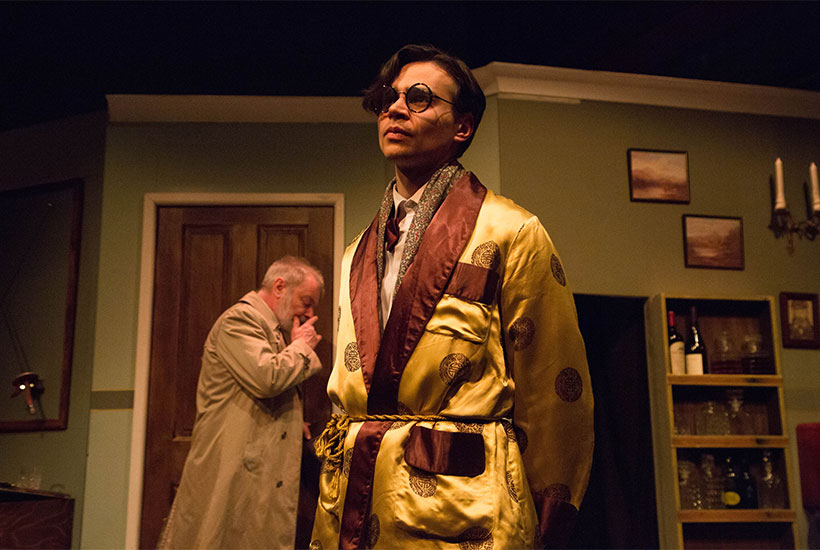Here’s the problem. Much communication is done online, especially by youngsters, and much drama focuses on communication. So how do theatre-makers represent emails and telephonic chitchat in ways that are stimulating and realistic? The usual solution is to mount blank screens around the stage and to beam the comms on to the boards while the characters crouch over their devices, tapping away. Realistic, yes. Hardly stimulating. When play-goers have seen this once — and most of us have seen it repeatedly — they crave a new approach.
Roxana Silbert’s production of Al Blyth’s spy drama The Haystack projects the text messages just like everyone else. And the show relies too heavily on photographic inserts. Audiences make a deliberate effort to see human beings on stage and it’s unfair to fob them off with snapshots and voiceovers instead of actors.
Rona Morison plays Cora, a cub reporter stuck in ‘blogger’s corner’ at the Guardian. She delivers a series of brilliant scoops from a well-placed source in the Middle East. Her editor is impressed. Promotion beckons. But when her source goes missing — bumped off probably — Cora suffers a mental breakdown. She’s being secretly monitored by Neil, a lonesome geek at GCHQ, who uses private data about her life to set up a meeting. They start an affair. He’s living a lie. She doesn’t know the truth.
This is a strong idea and their romance is complicated by Cora’s struggles with depression. ‘Life’s too short. And if it’s not there’s always suicide,’ she says with chilling glibness. The relationship could develop into marriage and family life, and so on, but it remains in the lovey-dovey honeymoon phase. And it all comes to a juddering halt when the writer throws in a twist that is more comical than credible.









Comments
Join the debate for just £1 a month
Be part of the conversation with other Spectator readers by getting your first three months for £3.
UNLOCK ACCESS Just £1 a monthAlready a subscriber? Log in